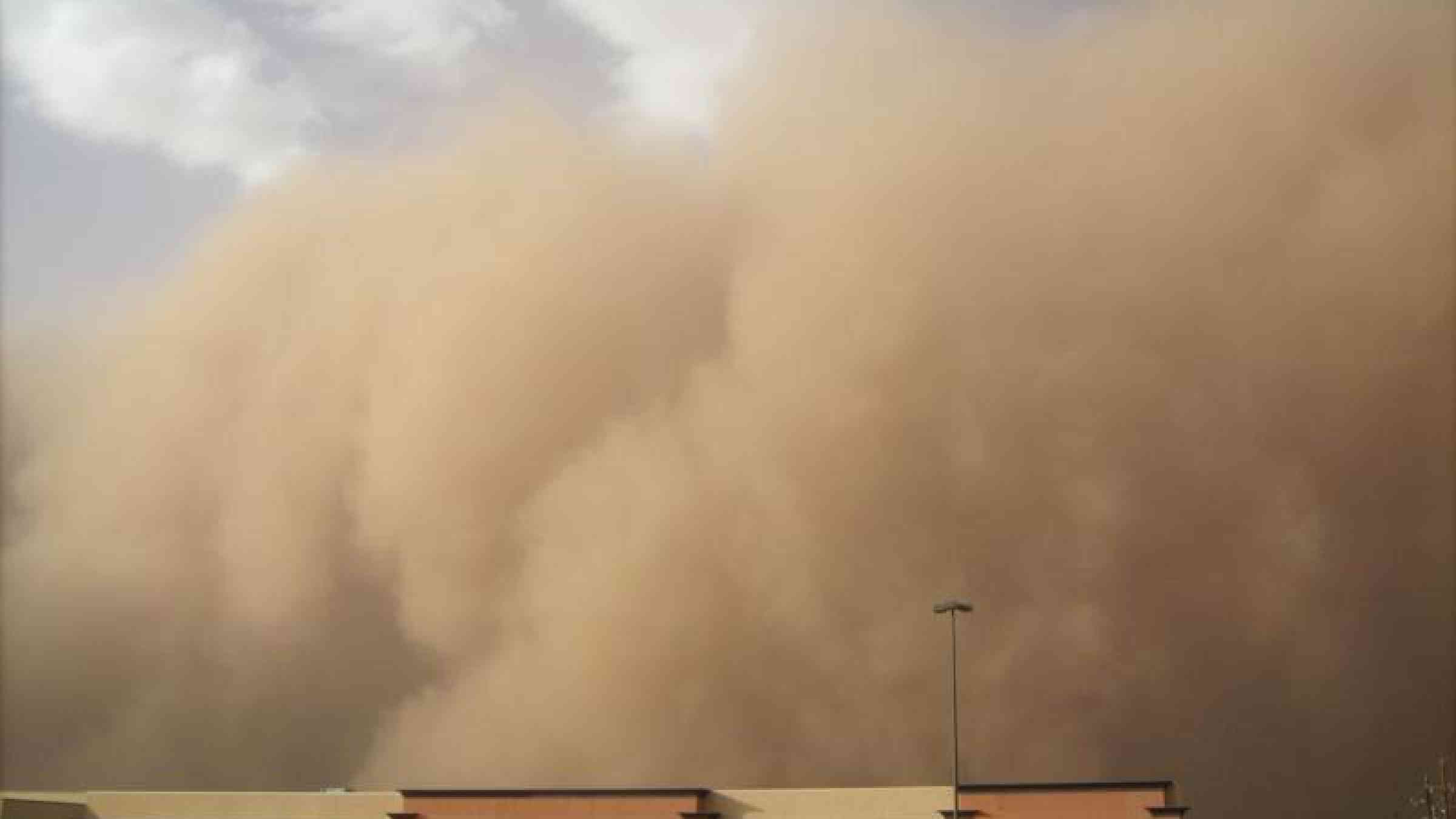
The World Meteorological Organization is stepping up activities to improve forecasts and early warnings of sand and dust storms, which are having an increasing impact on the environment, human health, and the economy in arid and semi- arid regions such as Northern Africa, the Arabian Peninsula, Central Asia and China.
Sand and dust storms occur when intensely hot air over the desert causes the lower atmosphere to become unstable, leading to strong winds that stir up vast amounts of loose sand and transporting it for hundreds, sometimes thousands, of miles. Land degradation, desertification and climate change are compounding the problem.
They are linked to health problems like respiratory ailments and meningitis, regularly cause airport closures and flight cancellations as well as dangerous road conditions. They disrupt key socio-economic sectors like agriculture and schooling.
In a new video, WMO explains the scope of the problem of sand and dust storms and what needs to be done about it. The video shows how improved observations and modeling and supercomputing power have enabled reliable early warnings to inform decision-making, but highlights the challenges in ensuring these warnings reach people who need them most.
WMO’s Sand and Dust Storm Warning Advisory and Assessment System (SDS-WAS) aims to enhance the ability of countries to deliver dust observations, forecasts and information on airborne dust to end-users a full three-days in advance, says Enric Tarradellas, an expert with the Spanish meteorological service AEMET and chair of WMO SDS-WAS steering committee.
“The poor also deserve to protect their health”
But translating forecasts into actionable and timely warnings for vulnerable and isolated communities, however, can still be a challenge. Greater collaboration among weather, health and emergency agencies is needed at the national level. Many local and national institutions also need more equipment, infrastructure and training.
In the years ahead, addressing the evolving challenge of sand and dust storms will require enhanced interagency collaboration and more ambitious international programmes for capacity-building.
“It is unconscionable that information that could help the health of the people, information that can help them to protect themselves, and take measures to prevent the type of respiratory and asthmatic diseases that we are discussing here, is not made available to them. All that it requires is limited resources, not big sums, to do that, and I would urge that all measures be taken to get it done.” says former United Nations Secretary-General Kofi Annan, whose native Ghana is regularly blighted by sand and dust storms. “The poor also deserve to protect their health.”
WMO is working with the World Health Organization and U.N. Environment on a series of issues linked to climate, health and the environment – sand and dust storms being one of them. WMO will leverage the partnerships built up through its Global Atmosphere Watch network to provide science-based products to inform actions.
Building on the central role of meteorological services in air quality monitoring, WMO has established a network of forecast centres to enhance regional and international cooperation. The Barcelona Dust Forecast Center provides forecasts of sand- and dust-storms for northern Africa, the Middle East and Europe, whilst the Asian centre is operated out of Beijing by the China Meteorological Administration.
The Gobi Desert in China and Mongolia also experiences major sand and dust storms.
“Sand and dust storms have a great impact on all countries in Asia. It is very important to strengthen the ability to forecast these storms in all Asian countries, as it plays an important role in prevention and mitigation,” says Zhang Xiaoye, Chair, WMO Sand and Dust Storm Warning, Advisory and Assessment System, Asian Node.